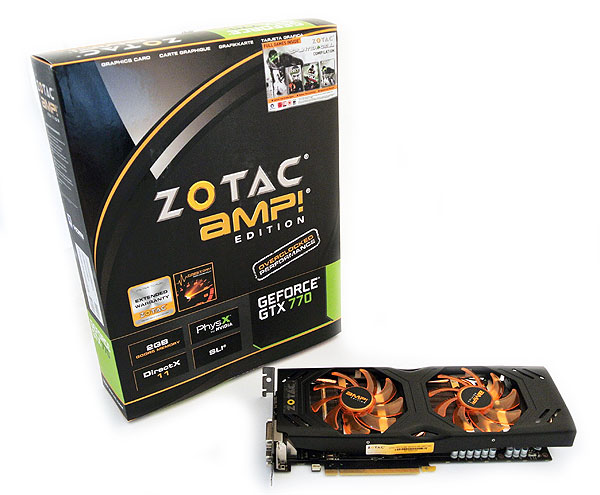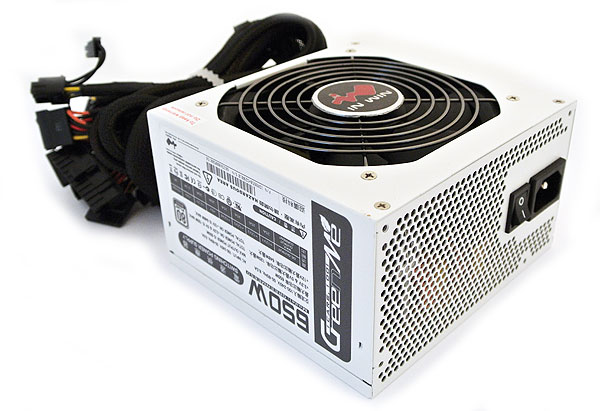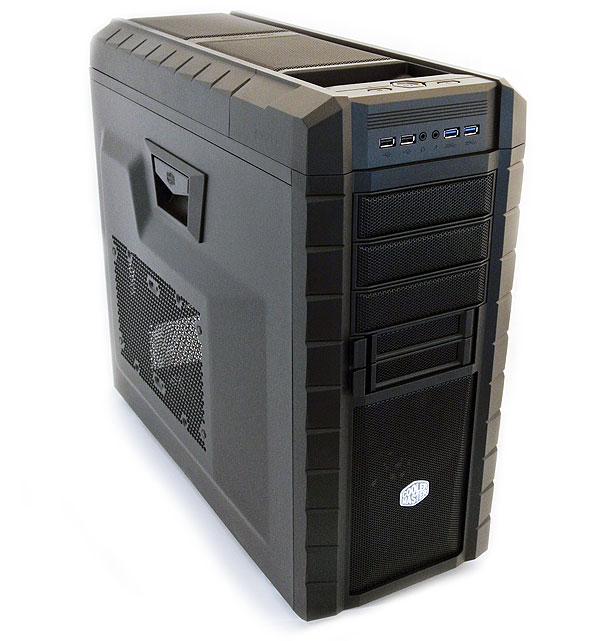System Builder Marathon Q3 2014: Mainstream Enthusiast PC
Graphics Card, Power Supply And Case
Graphics Card: Zotac AMP! Superclocked GeForce GTX 770
The GeForce GTX 970 launched last week wasn't available (or even public information) back when we ordered the pieces for this build. So, I needed something cheaper than the Radeon R9 290 that wouldn't sacrifice gaming performance. Under $300, the best option was Nvidia's GeForce GTX 770.
I went with Zotac's factory-overclocked model due to its low price, respectable clock rates rated for 1150 base and a typical 1202 MHz GPU Boost frequency, plus 1800 MHz memory, and the hope for additional headroom.
Read Customer Reviews of Zotac's AMP! Superclocked GeForce GTX 770
Selling for $280, Zotac's card serves up impressive frame rates at its price, even though GK104 gets humbled by the GeForce GTX 970 overshadowing it today. Still, Nvidia's Kepler architecture remains quite capable, and I expect this implementation to power through our benchmark suite. At least until I start running the three-screen resolutions, that is.
Power Supply: In Win GreenMe 650 W
Read Customer Reviews of InWin's GreenMe 650 W
Get Tom's Hardware's best news and in-depth reviews, straight to your inbox.
In Win combines solid power delivery with attractive value, enabled by manufacturing its own products. I've seen recommendations to try the GreenMe 650 W and, given the need to fit more output into my budget this quarter, I decided to try my luck with a $60 supply.
Case: Cooler Master HAF XM
Read Customer Reviews of Cooler Master's HAF XM
Cooler Master's HAF series is synonymous with airflow, making it an ideal choice for my overclocking-oriented build. I've worked previously with the excellent HAF X. But that monstrous case costs almost $200 and I needed something more budget-friendly.
With that in mind, I decided to give the smaller HAF XM a try to see what compromises are made in shrinking this lauded line-up down to the $120 range.
Current page: Graphics Card, Power Supply And Case
Prev Page CPU, Motherboard And Cooler Next Page Memory, Hard Drives And Optical StorageDon Woligroski was a former senior hardware editor for Tom's Hardware. He has covered a wide range of PC hardware topics, including CPUs, GPUs, system building, and emerging technologies.
-
gamebrigada Not sure why you would go with AsRock... I've seen so many failed motherboards from them after a few months of use... Friend of mine is on his 4th swap from them, and is beyond tired of swapping with them, the current one at least has issues that he can work around... with a usb to ethernet adapter....Reply -
mlga91 Personally, i'd get a cheaper case and put a 970 on there, looks for the cost of performance doesn't seems too wise for me.Reply -
DynamoNED Reply14242198 said:Personally, i'd get a cheaper case and put a 970 on there, looks for the cost of performance doesn't seems too wise for me.
While I'd agree on the cheaper case, the 970 wasn't an option since they hadn't been released when they were buying parts for this quarter's SBM.
From Page 3 of the article: "The GeForce GTX 970 launched last week wasn't available (or even public information) back when we ordered the pieces for this build. So, I needed something cheaper than the Radeon R9 290 that wouldn't sacrifice gaming performance. Under $300, the best option was Nvidia's GeForce GTX 770."
Obviously, today the 970 would be a much better choice, but that option didn't exist when this build was purchased. -
realibrad @ mlga91Reply
Good job. There is always that guy who does not read the article when it explains why the brand new card was not used, because it was not an option at the time of the review.
So congrats on being that guy this time. It only took 3 posts to get there. -
de5_Roy an ssd and a cm haf case in this build. that should prevent the rages, gasps and disapproving gazes from the last quarter. ;) really though, a o.c. oriented pc should have parts built for speed and this pc has them.Reply
on the last page:
When price vs. performance is compared, the new build doesn't look as attractive as the Q3 enthusiast system.
may be you meant the Q2 enthusiast system. imo, yea, the q3 build doesn't seem as attractive as the q2 one. i think that one could add the ssd from this build and still be the better pc.
i wonder if you guys would build an fx8350/8320 pc as an alternative build at this price range for the ongoing overclocking theme. -
Onus The PSU received a Golden Award at HardwareSecrets, and it did mostly well on other sites as well, although at least three noted the presence of Samxon capacitors. They don't appear to be "GF" series though, which supposedly are the really bad ones.Reply
I'd like to know more about the thickness / flexibility of the ASRock mobo. Otherwise, I don't think I have any niggles over performance-related parts. -
g-unit1111 Reply14242123 said:Not sure why you would go with AsRock... I've seen so many failed motherboards from them after a few months of use... Friend of mine is on his 4th swap from them, and is beyond tired of swapping with them, the current one at least has issues that he can work around... with a usb to ethernet adapter....
I've never had any problems with Asrock and I'm on my second Asrock board. -
Onus Although some of them are thin and uncomfortably flexible, I've also not had any ASRock mobos die on me, except one likely killed by heat. I have read mixed comments on them, although most reviews tend to be positive.Reply






